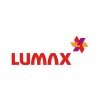
i
Endurance Technologies
Filter interviews by
Endurance Technologies Plant Head Interview Questions and Answers for Experienced
Endurance Technologies Plant Head Interview Experiences for Experienced
2 interviews found
I applied via Recruitment Consulltant and was interviewed in Oct 2024. There were 2 interview rounds.
Leadership, result oriented
(1 Question)
- Q1. Technical, P&L, cost saving projects
Interview Questionnaire
3 Questions
- Q1. What is the ROCE
- Ans.
ROCE stands for Return on Capital Employed. It is a financial ratio that measures a company's profitability and efficiency in using its capital.
ROCE is calculated by dividing earnings before interest and taxes (EBIT) by the capital employed.
Capital employed includes all the long-term funds invested in the business, such as equity and debt.
ROCE is a useful metric for investors to evaluate a company's ability to generate...
- Q2. What is the key factors for high EBITDA
- Ans.
Key factors for high EBITDA include revenue growth, cost control, efficient operations, and effective capital management.
Revenue growth through increased sales or pricing strategies
Cost control through efficient supply chain management and reducing overhead expenses
Efficient operations through streamlined processes and automation
Effective capital management through smart investments and debt management
- Q3. What is the Role of Plant Head to achieve High EBITDA
- Ans.
The Plant Head plays a crucial role in achieving high EBITDA by optimizing production processes, reducing costs, and increasing efficiency.
Develop and implement strategies to improve production efficiency
Reduce costs by optimizing resource utilization and minimizing waste
Ensure timely maintenance and repair of equipment to minimize downtime
Implement quality control measures to reduce defects and improve customer satisf...
Interview Preparation Tips
Top trending discussions






Interview questions from similar companies


About Company _ how to growth company
(2 Questions)
- Q1. Not question but defined roles & responbility
- Q2. And make a policy system in company so that all employees do the work harmony.
(1 Question)
- Q1. Skill man power required
Interview Preparation Tips

I applied via Naukri.com and was interviewed in Dec 2024. There was 1 interview round.
(2 Questions)
- Q1. Detail of personal information,
- Q2. Knowledge of TPM and P&L
Interview Preparation Tips

I applied via Recruitment Consulltant and was interviewed before Aug 2022. There were 4 interview rounds.

(1 Question)
- Q1. Systems, Processes, Dealing with Union, People management, Growth opportunity, P&L, ROTA, TPM, Automation, Future plans.
(1 Question)
- Q1. P&L, Abroad training.
(1 Question)
- Q1. 2 tests of 250 questions were conducted.

Assistant Manager Interview Questions & Answers
CIE Automotiveposted on 19 Jan 2018
Interview Questionnaire
3 Questions
- Q1. Regarding some steel grade
- Q2. Regarding ctc and date of joini g after geting of offer
- Q3. About transporting
Interview Preparation Tips
Experience: Some technical discussion regarding alloy steel making

I applied via Naukri.com and was interviewed before Aug 2020. There was 1 interview round.
Interview Questionnaire
1 Question
- Q1. Rules and regulations , work position
Interview Preparation Tips

I applied via Recruitment Consulltant and was interviewed before Jul 2021. There were 2 interview rounds.

(3 Questions)
- Q1. Basic information about current role and responsibilities
- Q2. Why you want to change the current company
- Q3. Family background and qualifications
Interview Preparation Tips

I applied via Recruitment Consultant and was interviewed in Jan 2020. There were 3 interview rounds.
Interview Questionnaire
4 Questions
- Q1. Q1. What is MHr ? And how costing is done ?
- Ans.
MHr stands for Man-Hour. Costing is done by calculating the total number of man-hours required for a task and multiplying it by the cost per hour.
MHr stands for Man-Hour, which is a unit of measurement for the amount of work performed by an individual in one hour.
Costing is done by determining the total number of man-hours required for a specific task or project.
The cost per hour is then multiplied by the total number ...
- Q2. Q2. Current pricing of ADC 12 & plastic resins.
- Ans.
I do not have the current pricing information for ADC 12 & plastic resins.
I apologize, but I do not have the current pricing information for ADC 12 & plastic resins.
I would need to conduct research or consult with a colleague who has access to this information.
Pricing for these materials can fluctuate frequently based on market demand and other factors.
- Q3. Q3. How you do costing of Plastic & Casting parts.
- Ans.
Costing of plastic and casting parts involves analyzing material costs, production processes, and overhead expenses.
Analyze the material costs by considering the type and quantity of plastic or casting material required.
Evaluate the production processes involved in manufacturing the parts, including molding or casting techniques.
Consider the labor costs, machine costs, and energy costs associated with the production pr...
- Q4. Q4. To give you a plastic part, & you have to analyse on what machine it will run & it's tool cost.
- Ans.
To determine the machine and tool cost for a plastic part.
Analyze the dimensions and material of the plastic part
Identify the required tolerances and surface finish
Consider the production volume and lead time
Research the available machines and their capabilities
Calculate the tooling cost based on the chosen machine
Consider the maintenance and operating costs of the machine
Interview Preparation Tips
Be a gem in your area, if you don't have any answer ,show them your capabilities that you can do it when you ll be given the task.

I applied via Recruitment Consultant and was interviewed in Dec 2020. There were 3 interview rounds.
Interview Questionnaire
7 Questions
- Q1. Q1. What is the latest version of PPAP?
- Ans.
The latest version of PPAP is PPAP 4th Edition.
PPAP stands for Production Part Approval Process.
The 4th Edition of PPAP was released in 2006.
It is a standardized process in the automotive industry to ensure that suppliers meet the requirements for production parts.
PPAP includes documentation such as design records, engineering change documents, and control plans.
It also involves conducting various tests and measurement...
- Q2. Q2. What is Fmea & why it is used during development?
- Ans.
FMEA is a method used during development to identify and mitigate potential failures in a system or process.
FMEA stands for Failure Mode and Effects Analysis.
It is a systematic approach to identify and prioritize potential failures in a system or process.
FMEA helps in understanding the potential causes and effects of failures.
It is used to assess the severity, occurrence, and detectability of failures.
By analyzing fail...
- Q3. What is DVP&R ?
- Ans.
DVP&R stands for Design Verification Plan and Report. It is a process used to ensure that a product meets its design specifications.
DVP&R is a structured approach to testing and validating a product's design.
It involves creating a plan for testing the product, executing the tests, and documenting the results.
The plan includes details such as the test objectives, test methods, acceptance criteria, and test schedule.
The ...
- Q4. What is the value of NDC & we take the this value..??
- Ans.
NDC stands for National Drug Code. It is a unique identifier for drugs in the United States.
NDC is a 10-digit code that identifies drugs, including prescription and over-the-counter medications.
The first segment of the NDC represents the labeler code, which identifies the manufacturer or distributor of the drug.
The second segment represents the product code, which identifies the specific drug formulation and strength.
T...
- Q5. At which stage the Npd work of PPAP File making is done?
- Ans.
PPAP file making is done during the production validation stage of NPD work.
PPAP file making is a part of the production validation process in NPD work
It involves documenting the production process and ensuring it meets customer requirements
PPAP file making is typically done after the design and development stages
It includes documentation such as control plans, process flow diagrams, and inspection records
- Q6. How many ppm in 6 sigma..?
- Ans.
The ppm in 6 sigma is 3.4 defects per million opportunities (DPMO).
6 sigma aims for a defect rate of 3.4 DPMO.
PPM stands for parts per million.
DPMO is a measure of process performance.
The lower the DPMO, the better the process performance.
Achieving 6 sigma means having a process that produces 99.99966% defect-free output.
- Q7. Problem solving tools & describe pareto chart & why we use it..?
- Ans.
Pareto chart is a problem-solving tool used to identify and prioritize the causes of a problem.
Pareto chart is a bar graph that displays the relative frequency or size of problems in descending order of importance.
It helps to identify the vital few causes that account for the majority of the problems.
It is based on the Pareto principle, also known as the 80/20 rule, which states that 80% of the effects come from 20% of...
Interview Preparation Tips
Endurance Technologies Interview FAQs
Tell us how to improve this page.
Endurance Technologies Interviews By Designations
- Endurance Technologies Senior Engineer Interview Questions
- Endurance Technologies Executive Interview Questions
- Endurance Technologies Quality Engineer Interview Questions
- Endurance Technologies Production Engineer Interview Questions
- Endurance Technologies Engineer Interview Questions
- Endurance Technologies Senior Electrical Engineer Interview Questions
- Endurance Technologies Assistant Manager Interview Questions
- Endurance Technologies Executive Engineer Interview Questions
- Show more
Interview Questions for Popular Designations
- Plant Operator Interview Questions
- Plant Manager Interview Questions
- Plant Incharge Interview Questions
- Power Plant Engineer Interview Questions
- Plant Engineer Interview Questions
- Plant Supervisor Interview Questions
- Water Treatment Plant Operator Interview Questions
- Power Plant Manager Interview Questions
- Show more
Endurance Technologies Plant Head Interview Process for Experienced
based on 1 interview
Interview experience
Interview Questions from Similar Companies
Fast track your campus placements
Endurance Technologies Plant Head Reviews and Ratings
based on 3 reviews
Rating in categories
|
Senior Engineer
547
salaries
| ₹2 L/yr - ₹8 L/yr |
|
Executive
272
salaries
| ₹4 L/yr - ₹10 L/yr |
|
Assistant Manager
266
salaries
| ₹5.5 L/yr - ₹15 L/yr |
|
Quality Engineer
251
salaries
| ₹1.1 L/yr - ₹4.8 L/yr |
|
Senior Production Engineer
149
salaries
| ₹2.6 L/yr - ₹7 L/yr |

JBM Group

Subros

TVS Sundram Fasteners

Spark Minda
- Home >
- Interviews >
- Endurance Technologies Interview Questions >
- Endurance Technologies Plant Head Interview Questions for Experienced













